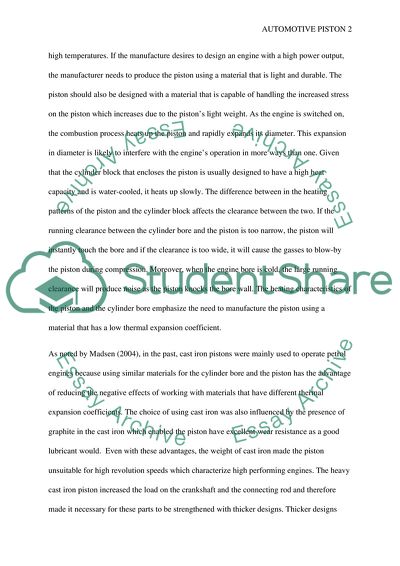Cite this document
(Materials&Manufacturing Report Automotive Piston Essay Example | Topics and Well Written Essays - 2000 words, n.d.)
Materials&Manufacturing Report Automotive Piston Essay Example | Topics and Well Written Essays - 2000 words. https://studentshare.org/engineering-and-construction/1818130-materialsmanufacturing-report-automotive-piston
Materials&Manufacturing Report Automotive Piston Essay Example | Topics and Well Written Essays - 2000 words. https://studentshare.org/engineering-and-construction/1818130-materialsmanufacturing-report-automotive-piston
(Materials&Manufacturing Report Automotive Piston Essay Example | Topics and Well Written Essays - 2000 Words)
Materials&Manufacturing Report Automotive Piston Essay Example | Topics and Well Written Essays - 2000 Words. https://studentshare.org/engineering-and-construction/1818130-materialsmanufacturing-report-automotive-piston.
Materials&Manufacturing Report Automotive Piston Essay Example | Topics and Well Written Essays - 2000 Words. https://studentshare.org/engineering-and-construction/1818130-materialsmanufacturing-report-automotive-piston.
“Materials&Manufacturing Report Automotive Piston Essay Example | Topics and Well Written Essays - 2000 Words”. https://studentshare.org/engineering-and-construction/1818130-materialsmanufacturing-report-automotive-piston.


